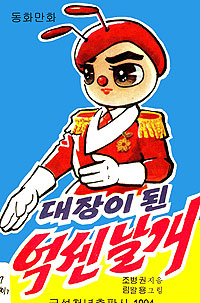Recent years have seen an explosion of interest in Japanese manga, or comic books, in the United States, yet Korean comics remain relatively unknown. This fall, the Mildred Lane Kemper Art Museum will present “Korean Comics: A Society Through Small Frames,” a rare U.S. exhibition of work from both North and South Korea.
Organized and curated by The Korea Society, “Korean Comics” features more than 80 works by 21 cartoonists, drawn from the 1950s to the 1990s. The exhibition provides a decade-by-decade glimpse of the evolving social realities in contemporary Korea, as depicted in comics ranging from popular children’s entertainment to aggressive forms of political commentary.

South Korean artists such as Park Jae Dong, who produced serials for the liberal newspaper Hankyoreh, have illuminated social ills as well as the changing political landscape — territory often overshadowed by the nation’s overwhelming economic success.
Park Ki Jeong, whose disparagement of the government in works such as “Tojonja (Challenger)” (1964) garnered much attention throughout the 1960s, explained that “metaphor and satire are the essence of news criticism.” In the 1980s, Lee Hyun Se’s series “A Daunting Team” condemned the affairs of the weakening military dictatorship while simultaneously masquerading as a sports drama centered on a rebellious, unkempt baseball player.
North Korean comics also captured their country’s economic hardships and strict ideological controls. “The Great General Mighty Wing” (1994), by Lim Wal Yong and Cho Pyong Kwon, was published shortly after the death of Kim Il Sung, the nation’s ruler of 46 years, and portrays devout socialists as fruitful, loyal honeybees, thus reinforcing the reader’s attachment to North Korea’s leadership during a period of political change.
Other North Korean comics exalt the prestige of the motherland through major figures in the international wrestling circuit. One such series, “World Professional Wrestling King Ryok To San” (1995), by Kim Tae Kwon, is a biographical comic of a famous North Korean wrestler who is glorified as a figure capable of defeating foreigners and defending the country’s honor.
Taken together, these works present a portrait of Korean civil society as both vigorous and engaged, continuously challenging and energizing the status quo in whimsical and provocative ways. In so doing, they play an important role in characterizing and distinguishing the culture and sentiment of contemporary Korea.
“Korean Comics: A Society Through Small Frames”will open Friday, Aug. 31, and remain on view through Dec. 17 in the Kemper Art Museum’s Teaching Gallery. The exhibition is free and open to the public. Regular hours are 11 a.m.-6 p.m. Mondays, Wednesdays and Thursdays; 11 a.m.-8 p.m. Fridays; and 11 a.m.-6 p.m. Saturdays and Sundays. The museum is closed Tuesdays.
For more information, call 935-4523 or visit kemperartmuseum.wustl.edu.